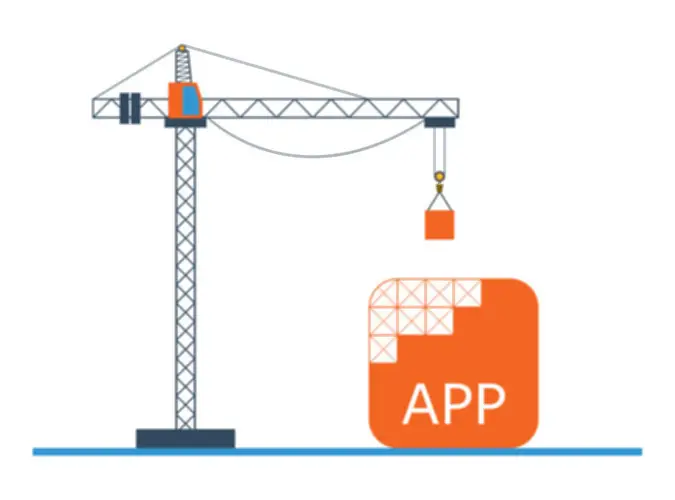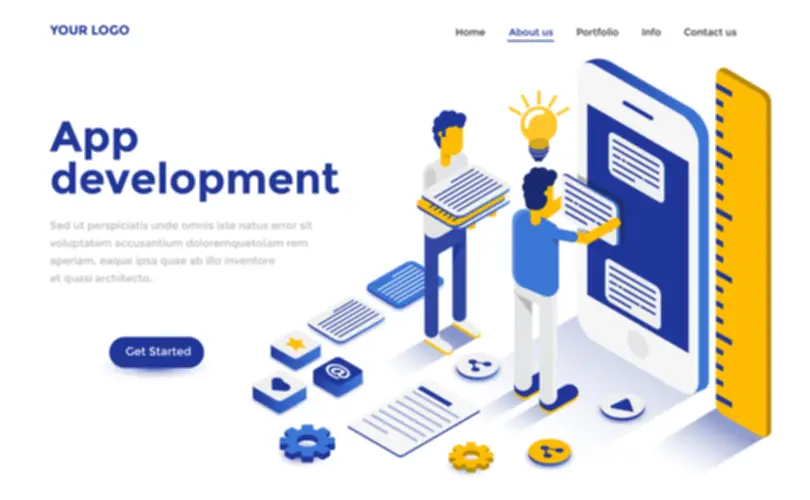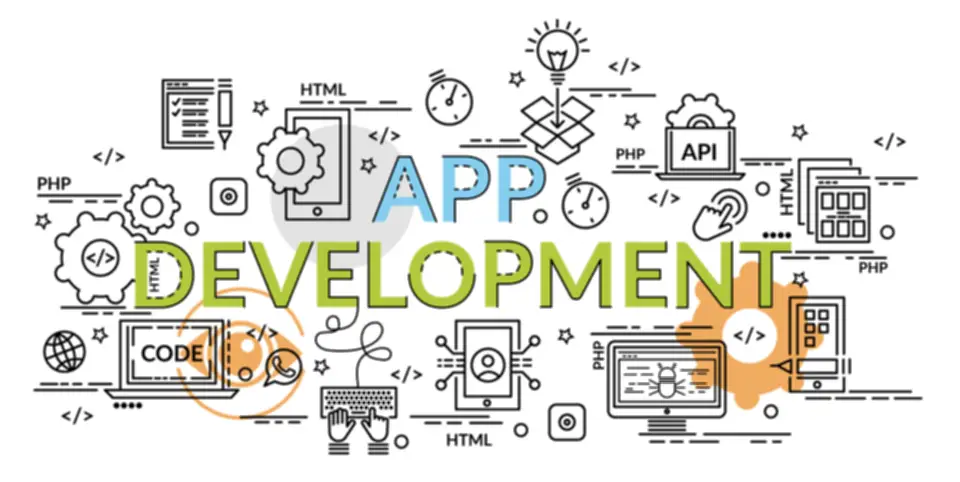The complete process of mobile application development

Modern smartphones are capable of many things. You can watch movies, communicate with people from around the world, play games, search for information, book tickets. The number of possibilities is unlimited. All these are available due to the evolution of the mobile application development industry.

In fall 2020, Statista showed that there are more than 3.5 billion smartphone users. This is an enormous number that drastically impacts the world economy. This also means that there is plenty of space for adding your own application and making profits from it.
However, why would a business need a mobile app and how is this software developed? Read the latest article prepared by the Global Cloud Team to find out!
Why do businesses need mobile applications?
Having your own app is a must-have if you want to reach out to more customers and provide them the best user experience. It also makes brand building, awareness-raising, and customer conversion easier. This is a win-win choice.
According to the statistics from 2019, over 2 billion users have performed at least one purchase via their smartphone. Also, at least $1 from each $4 earned comes from mobile, so the numbers are quite huge. If the company does not have an app of its own, it may be considered to be several steps behind its competitors who do have one.

We are confident that we have what it takes to help you get your platform from the idea throughout design and development phases, all the way to successful deployment in a production environment!
7 stages of mobile app development
The development of mobile software cannot be compared with a walk in the park. This is more like a run in a labyrinth full of surprises. That is why it is required that everything is planned ahead and each stage is well-structured. Also, there must be strict timeframes to prevent any delays.
1. The idea
First of all, you have to come up with the concept of an application. It must be something that is useful for your business. For instance, if your company is a group of shops around the country, you could make an application with all your goods included so people can see where to buy a specific product. If you specialize in the sports industry, you could make an application with a discount system and regular reminders that it is time for a workout.

2. Market research
The next thing you have to do is make some research to find out whether the software will be successful. It may also appear that you will get some new ideas throughout the process and come up with some new requirements for the app.
Here are some points you need to think about before proceeding:
- The objective of the app
- The target audience of the app
- The Unique Selling Point
- Platforms on which the software will work
- Features of the competitor’s applications
- Resources necessary to create your idea
- Promotion methods
- Updating the application
When you get an answer to all these points and think them over, you will be able to form a detailed app development plan.
3. User interface and user experience design
UI and UX are some important factors that can determine how successful your application will be. The User Interface is the visual part while the User Experience includes the way the software will be used by a consumer. You must have already guessed that the general design must be comfortable and engaging.
Things become more difficult when the design process begins. It is important that the designer knows everything about information architecture, workflows, wished style, etc. Several mockup versions will be created in order to get an idea of how things might look like. If they suit you, then a prototype will be developed. This one will show you the application in the way it should work.
A few words about prototypes must be mentioned as well. Although their creation might take away a lot of time, they are needed to understand what the final result would look like. Therefore, it is easier to correct something from a prototype than from a completely ready product.
4. Development stage
This is where the coding starts. The skeleton of your application starts growing some muscles. During the development, various activities will occur: the creation of a testing environment, code writing, repeated testing, packaging the application, etc.
There are three basic parts that are generally included in the app development stage:
- The back-end
Basically, the back-end includes everything that is related to the server, infrastructure, and processes that the user does not see. It is crucial that all the components are tested both separately and together in order to make sure there are no crashes.
- APIs
The usage of APIs is required in order to make the application work with different operating systems, the back-end itself, and other tools that your company uses.
- The front-end
In a nutshell, the front-end is what you see and use when you work with an application. Modern mobile apps usually have to get special APIs to work offline, so it is worth considering this option too.
It is necessary that you make sure there is space for future updates. Mobile operating systems tend to get new versions regularly and you cannot know how your software will work with it.
A good recommendation would be to perform tests after each significant part is added to make sure everything works as planned. This will prevent the need to fix things when the software is completely developed and wrapped up.
5. Testing and reviewing
As we have mentioned a bit earlier, it is best if you regularly test the application during each stage. This will show any existing vulnerabilities and will let you estimate the quality of your product.
If you ignore any discovered flaws, they will be a problem in the future. They may block the work of a specific feature or become a target of an attacker to break down the application. Usually, there are separate teams that are responsible for testing and bug fixing. However, it won’t be a problem if the same team works on the development and testing.
There are different types of testing. You can analyze the performance of the app under different load, speed of the response, and other important criteria. It all depends on what you plan to find.
Another popular way of testing applications is just gathering some interested users and granting them access to the software. People often tend to find mistakes that are undiscovered by professionals, so it is likely that they will find something interesting.
6. Launching the software
As only you launch the application, this means that it becomes available for users to download. If you still need feedback, publish the app in the Play Market or App Store as a beta version. This will not affect the general rating of the software and you will be the only one to see reviews.
Each software store has its own requirements for applications to be published. Make sure yours complies with those rules, so there would be no issues during the mobile app deployment.
7. Promoting and supporting the software
After your application becomes available for downloading, you should start investing in its promotion. There are many ways to do so. Make an announcement on social media, inform customers in your offline business centers, purchase a targeted advertisement – the methods are unlimited. The better you promote the software, the more customers you will get.
Also, make sure that you do not ignore user reviews and questions. People appreciate it when they are answered and this helps to build brand loyalty. This is one of the goals of a mobile application, so do not ignore this step.
Encourage your audience to fill in support tickets if they experience any bugs or problems with the app. This will help you prevent all significant issues that might impact client conversion. To motivate the users, you could offer them a bonus for each bug they find.
The bottom line
The mobile application development process is not easy at all. It requires a structured approach and is often time-consuming unless you use RAD. Also, the creation of high-quality software requires a lot of investment, so make sure you do not have a shoestring budget.
If you still haven’t got a team to work with, it is recommended that you develop your application with the Global Cloud Team. The portfolio includes many projects of all kinds, so each member is experienced to deliver the best results.
Top Articles
Embracing Automotive Digital Transformation to Accelerate Innovation
I am here to help you!
Explore the possibility to hire a dedicated R&D team that helps your company to scale product development.






